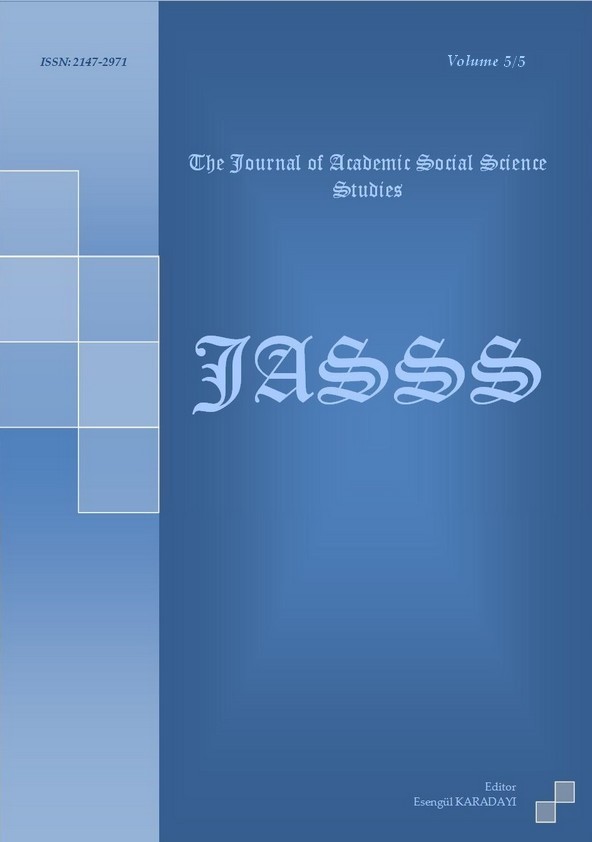Author :
Abstract
20.yüzyılın başlarında Rusya’nın Batı dünyası ile etkileşimi sonucu kültür ve sanat hayatında önemli değişim yaşandı. Yüzyılın ilk çeyreğinde kültür ve sanatın tüm dallarında tüm dünyayı önemli derecede etkileyecek Rus sanatçılar yetişti. Birinci kuşak Rus avangartları olarak bilinen bu sanatçıların bir kısmı Ekim Devriminden (1917) sonra bir kısmı ise 1932’de ülkenin sanat politikasında yaşanan değişim sonucu, sanatçılara dayatılan toplumsal gerçekçilik ideolojisine karşı çıkarak ülkeyi terk ettiler. Bazı sanatçılar ise bu ideolojiyle uzlaşarak kendi kabuklarına çekildiler ve ülkede kaldılar. Sovyet sanatı tarihinde en ilginç olaylardan “Çözülme”, 50-60’lı yıllarda Kruşev iktidarında, Sovyet sanatının “ikinci kuşak avangardizmi”, “yeni sanat” veya “yer altı sanatı” olarak adlandırılan dönemde (1954-1964) yaşanmıştır. “Çözülme” yıllarının sona ermesinin ardından 1960-70’li yılların sosyokültürel ortamı, parti bürokrasisinin zaferine, konservatif geleneklerin tekrar ülkenin kültür hayatında artmasına ve sansürün şiddetlenmesine sahne oldu. “Yeni stalinizm” olarak adlandırılan bu dönemde aydın, sanatçı ve yazarların sınır dışı edilmesi, sürgüne gönderilmesi gibi tarihe kara harflerle yazılan olaylar yaşandı. Özellikle konservatif geleneklere baş kaldıran sanatçıların mücadelesi ve bu sürecin sanata yansıyan yüzü olan Manej–1962, Pogrom–1974 (Buldozerli Kıyım) sergilerine araştırmada geniş yer verilecektir.
Keywords
Abstract
Beginning of 20th century witnessed important changes in the domains of art and culture due to the interaction between Russia and the western world. Russian artists, who took to the stage on the first quarter of the century, had a global influence with their wide range of cultural and artistic works. A group within these artists, known as the first generation Russian avant-gardes, left Russia after the October Revolution in 1917. Another group had to leave their home country in 1932, as a reaction to the social realism which was imposed by the government as the cultural policy. Few of them, on the other hand, compromised with the ideology by staying quiet and isolated and thus stayed in Russia. Moderation period which is one of the most interesting intervals throughout Russian history of art, took place between 1954 and 1964, under Kruşev’s rule. Moderation was “the second generation avant-gardism” in the art of the soviets and it was also called “the new art” or “art of the underground”. Following the end of moderation period, sociocultural atmosphere of the 60s and the 70s witnessed the victory of party’s bureaucracy, conservative traditions re-gaining its power in the cultural life of the country and increasing of the censorship. This period which was named as “New Stalinism”, was characterized with the deportations or exiles of the many intellectuals, writers, artists, and incidents as such. In this article, there will be special emphasis on the incidents such as Manej (1962), Pogrom - with bulldozers- (1974).
Keywords
- BİLGE, N., Modern ve Soyut Heykelin Doğuşu 1900-1950. s.14-148
- ELÇİN, A., Sentyabr 1974,”Bulduzerli Qıyım”. Edebiyat ve İncesenet Qezeti.(Erişim. 12.03.2011)
- MEHDİYEVA AZİZZADE,T., 2011. Uluslar arası Sanat/Tasarım ve estetik Kuramları Sempozyumu. Bildiri.s.6
- YILMAZ, M., , Modernizmden Postmodernizme Sanat, Ankara 2006, s. 94-95
- Aндрей Xлобыстин. Kpaткий курс истоpии нонkoмфopмизмa. (Поиск@Маil.Ru http://go.mail.ru/.erişim: 10.01.2012)
- Александр Глезер. Русская мысль, сентябрь 1976 .Поиск@Маil.Ru http://go.mail.ru/.(erişim: 13.02.2010)
- Александр Глезер. К 35-летию «бульдозерной» выставки. Интервью. Поиск@Маil.Ru http://go.mail.ru/.(erişim:03.05.2012)
- Бульдозерный перформанс.Мемуар участника событий тридцатилетней давности.2004- 09-17 / Валентин Воробьев .Поиск@Маil.Ru http://go.mail.ru/:(erişim:23.02.2012)
- "Бульдозерная выставка": последний штрих к оттепели. Поиск@Маil.Ru http://go.mail.ru/:(erişim: 14.05.2011)
- Группа Гнездо – хроника 1974 – 1979.Составлена М. Рошаль-Федоров и О. Холмогорова. Поиск@Маil.Ru http://go.mail.ru/ :(erişim:22.12.2011)
- "ЗЕРКАЛО" – ЛИТЕРАТУРНО-ХУДОЖЕСТВЕННЫЙ ЖУРНАЛ Российская культура от Второго русского авангарда до современных достижений в прозе, поэзии, эссеистике и изобразительных искусствах. Издается в Израиле (Тель-Авив), Главный редактор: Ирина Врубель-Голубкина, E-mail: exprocom@gmail.com:(erişim:12.11.2011) Ирина Щербакова.Искусство и Пропаганда. 22/05/2009. Поиск@Маil.Ru http://go.mail.ru/:(Eerişim 10.07.2012)
- Keti Chukhrov, “Sovyet 60`ları: Projenin Sona Ermesinden Hemen Önce” Red Thread/ Arşiv / Sayı 2 (2010). www.red-thread.org/tr/makale. (Erişim, 20.05.2012)
- Kонец oттепели и усиление консервативных тенденций в pykoводстве kyлтурной жизнью. Поиск@Маil.Ru http://go.mail.ru/: (Eerişim 10.01.2012)
- Материал из свободной русской энциклопедии «Традиция». Поиск@Маil.Ru http://go.mail.ru/: (Eerişim 10.02.2012)
- Михаил Блexмaн(Кливленд). Вoждизм и Иckyccтво. Поиск@Маil.Ru http://go.mail.ru/: (Eerişim 03.05.2012)
- Hео сталинизм в культуре в 60-70-е гг. Поиск@Маil.Ru http://go.mail.ru/: (Eerişim 11.04.2012)
- Национальная политика советского государства. Поиск@Маil.Ru http://go.mail.ru/: (Eerişim 12.08.2012)
- Оттепель" и советская культура в конце 50-х - 60-е гг. Поиск@Маil.Ru http://go.mail.ru/: Отечественная культура в 1960-е - середине 1980-х гг. Поиск@Маil.Ru http://go.mail.ru/: (Eerişim 10.03.2012)
- Последствия булдозерной выставки 1974. Поиск@Маil.Ru.http://go.mail.ru/: (Eerişim
- RESİMLER: Resim 1. Kruşev Manaej-1962 sergisinde Resim 2. Buldozerli Kıyım sergisi öncesi, 1974 Resim 3.Buldozerli Kıyım Sergisini Dağıtan Ekip Resim 4. Buldozerli Kıyım Sergisi Sonrası
- Resim 5.Sergey Bordaçev. Duş 1973 Resim 6. Oskar Ryabin Manzara . 1990. T.Ü.Y.B
- Resim 7. Boris Orlov. Stalin 1972 Resim 8. Oskar Ryabin, Pasaport.T.Ü.Y.B
- Resim 9. Leonid Sokov. Sos Artın Yıldızı Resim 10. Ernest Neizvestnıy , “İki Yüz” 1962





